Question:
Is it possible to become a world-class champion in both kata and kumite?
Many people would say no.
But Junior Lefevre proved them all wrong.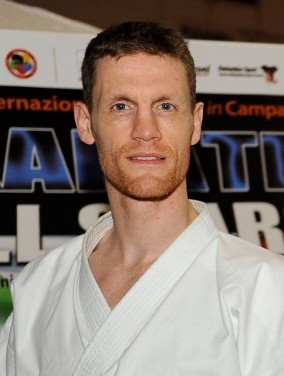
Raised by the harsh streets of Brussels, molded by the kill-or-be-killed mentality of old-school Karate, sensei Junior Lefevre is no stranger to hard work and dedication – whether in kata or kumite.
A trait that took him all the way to the top of the global Karate scene back in the days.
To him, it really doesn’t matter if you call something “kata”, “kihon” or “kumite”.
It’s all Karate.
And today in our exclusive interview, he reveals the stories, lessons and secrets that took him from the bottom to the top.
From a young Brussels sprout to a World Champion.
Although sensei Lefevre has retired from actively competing, he still regularly travels all around the world giving kumite seminars, inspiring Karate Nerds™ and coaching new champions, like Rafael Aghayev and George Tzanos – when he’s not busy teaching traditional classes in his dojo in Belgium.
And yes – he has the track record to back up his teachings.
Here’s a small sample:
WKF World Champion 1996 & 2000
WKF Vice World Champion 2002
WKF Bronze World Championships 1996 & 1998
EKF European Champion Open Class 1999
EKF European Champion -70 kg 1995, 1996, 1998, 1999
EKF European Champion Kata 1995, 1996
EKF European Championships Open Class medalist 1997, 2003
EKF European Championships Medalist -70 kg 1997, 2000, 2001, 2003
EKF European Championships Medalist Team Kumite 2003
Now…
Are you prepared to dive into the head of a unique Karate master?
Then saddle up!
Because here’s Junior Lefevre – Kumite & Kata Legend.
Enjoy!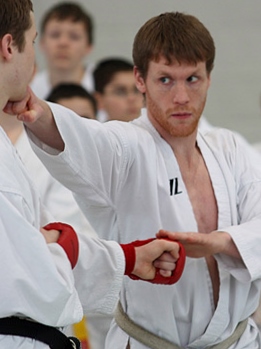
J (Jesse): All right! Let’s start from the beginning. When and why did you start Karate?
JL (Junior Lefevre): “I started Karate when I was 8 years old. The reason was for self-defense. I was living in a neighborhood in Brussels that was… not so good. I was always teased by other boys in school, and one day the principal asked my father to take me to a martial arts club.”
J: That’s often how it begins. So how was training back then, compared with today?
JL: “Well, there was certainly a difference in how people trained. It’s absolutely not the same today. In those days, training consisted mostly of copying what the others were doing. We trained very hard but never asked any questions. So I think Karate has made a big evolution in the way that practicioners are thinking today.”
J: Being able to ask questions is critical. But some people argue that we have lost a bit of the “shut up and train” mentality in this evolution. What do you think?
JL: “I know what you mean. It depends on who gives the class. Is the sensei a real Karate person? Or only a fighter? Or only a sport kata person? It’s a big, big, big, difference. Luckily, I was taught by a sensei who was traditional. He followed a certain Japanese lineage, Kaze and Shirai, that most Shotokan people will recognize – so I never did Karate for competition. Never. And that shaped my career.”
J: You didn’t do Karate as a sport? But you became a World Champion!
JL: “Sport kumite was just a step in my Karate evolution. This makes a big difference, because now when I’m retired as an athlete, I can continue my evolution in Karate. Of course I teach young kids for competition, because their parents pay me for that, and I need to live off Karate. But on the other hand, I can also teach people traditional Karate. I can always fall back on my basics – kihon, kata, kumite – and the link that you have between those three disciplines.”
J: This is interesting, because most people – especially competitors – seem to draw a line between kata, kihon, bunkai and kumite. They like to cherry-pick. But you actually competed at world-class level in both kata and kumite. Explain.
 JL: “For me, kata and fighting have never been separate. When we trained, we always did both. Kata and fight. It’s the traditional way. Now, perhaps I was not known as the greatest technician of kata, but you could always sense I was fighting in my kata.
JL: “For me, kata and fighting have never been separate. When we trained, we always did both. Kata and fight. It’s the traditional way. Now, perhaps I was not known as the greatest technician of kata, but you could always sense I was fighting in my kata.
That’s why I was often successful in kata tournaments, despite my “not perfect” technique. The referees could see I was really fighting. I was expressing a fight in my kata. Referees could feel that.
That’s why I placed third in Open de Paris in kata, after [Michael] Milon and the Japanese guy. I was European Champion in kata and kumite the same year. You don’t see that a lot. When I did kumite, I was very traditional too. I had that basic stance, with my feet firmly on the floor. For me it was no problem to fight in the open weight class – against people twice my weight, because I had really good stability on the floor – thanks to my kata practice.”
J: So, do you think it’s a mistake for young people to specialize in one thing?
JL: “I think, of course, it’s logical that you will always come further if you specialize in one direction. But we must never forget that we also need the other parts. Today I teach a lot of athletes at a really high level… and what do they do? They go to the gym. And they do Karate. Personally, I never did gym – my gym was kata. For me, that was my strength exercise. I think you can use your body to train a lot; speed, strength, endurance. You don’t need to go to a gym for that. But you always need a good physical foundation before specialization.”
*Pauses to write autographs*
J: What about the popular chasm between “modern” vs. “traditional” Karate? What’s your view on this?
JL: “There is a difference. For example, when I was fighting in traditional JKA [Japan Karate Association] it was different from WKF [World Karate Federation]. That’s true. But I believe you should always train with a traditional mindset. When you hit… hit. Punch a makiwara a thousand times. Then have that same mentality when you go for a point in a fight.
You can’t just do sport Karate. You should always have traditional Karate left. Unfortunately, the referees don’t care about this, so many coaches don’t teach traditional Karate anymore. But I don’t think it’s the athlete’s fault. They just do what they’re being taught!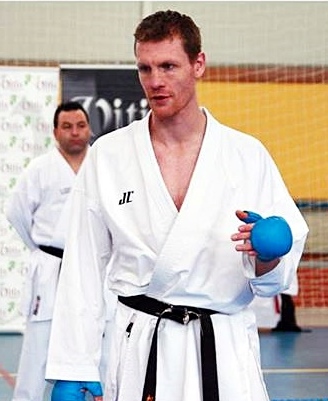
Old athletes, like José Manuel Egea were technically very good. But today’s top fighters are just fast, not technically good. Rafael [Aghayev] is an exception. They’re just clinching all the time and jumping around. This is the difference between modern and traditional.”
J: So, you think the old-school fighters were actually better than today’s fighters?
JL: “The old athletes, like the French guys, were technically very good. Like [Alexandre] Biamonti, for example. Of course he was not a kata specialist, but a punch is still a punch! Today, if you look at many kumite champions, they can’t even punch correctly. You can’t see where the punch is coming from! It’s not Karate anymore. It’s a mix between boxing and wrestling.
And by the way – I totally don’t agree with the new WKF rules about clinching.”
J: Yes, I heard you have some strong opinions about the WKF kumite rules. Tell me more.
JL: “First of all, I think it’s good that the rules are constantly developing. We need evolution in Karate. We need a system to encourage nice kicks and nice throws so it’s exciting to watch, improving our chances of becoming Olympic. I totally agree with that. But – clinching with both hands, so that the opponent becomes immobilized – I think it’s incorrect.”
J: Why?
JL: “Because now, if you clinch and the other guy tries to make a move, he gets a warning. I think it would be better for everyone, including the referees, if we give warnings for two-handed clinching. The only clinching we should allow is with one hand. Because then you still have one arm free to strike, block, punch, whatever.
We are not Judo people. We need to make a distinction. But we should still make everyone able to do throws and sweeps and keep it interesting. This is something I want to put on the table for WKF, but I need a lot of support.”
Lefevre teaching the biomechanics & tactics of gyaku-zuki
J: You’re also known as a world-class coach. What is your #1 advice for people who want to become good coaches?
JL: “Look a lot. But not only on your own athletes. You need to look at a lot of different things, and then accept. Accept that you can be wrong. There is more than one way to achieve a goal. There are many different methods to make a champion, and sometimes you have to accept that the way you are training your athletes is not a good one. Maybe you have to change.
Unfortunately, some coaches never consider this. They cannot accept any other way, and only think their way is the only correct way.
It’s the same with both kumite and kata. For me, every kata person is unique. Even though I don’t have the same hip mobility as a Japanese champion, I can still be good! Sure, my Chatanyara Kusanku will look a bit different than his, but it can still be technically good.
This is the treasure of Karate; we all do the same things, but a bit differently. That’s good. No stereotypes.”
J: So let’s flip it around: What’s your best advice for Karate students, or athletes, who want to achieve greatness in what they do?
JL: “Mentality is most important. Not only the physical. Because, many times you have athletes that are on the same level from a technical, physical and tactical point of view, but what makes them different is their head. If one wants to achieve his goal more than the other one, he will do it. Believe me.”
J: How can people train this?
JL: “The way you go to training is important. When you want to become a champion, every training is a championship. Every single training. You are not there to train. You are there to kill. And this mentality is completely different.
Today I’m 35 years old – I’m soft, compared to what I was when I was 20. I remember those days clearly, because nobody wanted to train with me. I was knocking people out. Even if my sensei said: “Go softer”, I didn’t care.
My idea was; If you are in front of me, you want my spot. That’s all. And if you want my spot, I will punch you. This was my way of looking at competition.”
J: Wow.
JL: “So when I went to tournaments, my opponents were afraid of me before we started. I won before the fight had even begun.”
J: Did that make you enemies?
 JL: “This is a funny point: On a national level, yes. But on international level, no. The top fighters that I met from other countries became some of my best friends. Like Iván Leal, whom I beat twice in the final of the European Championships – he became my best friend!
JL: “This is a funny point: On a national level, yes. But on international level, no. The top fighters that I met from other countries became some of my best friends. Like Iván Leal, whom I beat twice in the final of the European Championships – he became my best friend!
Another Dutch guy, I broke his nose and his jaw – but he broke my finger – we became best friends!
So it’s really funny that we respect each other for that. We are the same. We are exactly the same. We both trained hard and wanted to become the champ, so we had respect for each other.
People who never had these goals can’t understand. When they look, it seems like I want to show off. But no – I don’t want to show off. I want to be the best. Point.”
J: Like Nietzsche wrote; “The higher we soar, the smaller we appear to those who cannot fly.” Now, can you describe your most memorable experience from your long career in Karate?
JL: “Sure. The best period in my whole life was when I was not competing at elite level, but traveling around Europe for training. I was 12 years old, and my father would drive me everywhere to train with Japanese sensei; Kaze, Shirai and others. I was just doing tournaments and seminars. Tournaments, seminars, tournaments, seminars… All I wanted was to be on the mat. And I loved it. I loved to just train hard and squeeze the sweat from my gi.
That was the best part of my life. Not thinking about money, not thinking about girlfriends. Just hard work. That was cool.
Now, from a championship point of view; I have to mention the world title. When you work hard for something and achieve it, it’s always a success. But the joy you feel at that moment is always in comparison to the work you put in the preparation. It’s such a relief when you win. You think about all the hard work, and the pain you had to endure.
Also, I had to go through a lof of politics with the Belgium Karate Federation. Did you know I had to change my passport to become a World Champion?”
J: No?
JL: “You don’t know my story? Let me tell you: I was European Champion for Belgium. But because I have a big mouth, I said that the president of the Belgium Karate Federation was an a**hole. He was stealing money, so I thought he was an a**hole and I said it. Obviously, I was not selected for any championships after that. I missed two national team camps in one year, and was not selected. So I did the World Championships in Rio de Janeiro with no coach.”
J: What?!
JL: “You see, we went to court. They examined our case, and I won. So the federation said I could participate in the championships, but without a coach. I was alone, and nobody in the team was allowed to speak to me. So I came to semifinal, although I lost, and immediately called my dad to say I needed a coach. I was so tense!
That’s when the Croatian Karate Federation asked me to fight for them. So I had to get a new passport in 24 hours, and for the next championships I was selected by Croatia. I won everything after that.”
J: Awesome! Hard work and dedication always beats politics. Now, it’s time to wrap up. I only have one question left. We’ve been talking a lot about the past, as well as the present, but let’s talk about the future: What are your hopes for the future of Karate?
JL: “From a personal point of view, I hope to continue teach Karate like I do now – with a lot of joy. From a global point of view, I hope that Karate can become an Olympic sport – without selling out our soul. Karate has to stay Karate.
The problem is, like I said earlier, with the clinching, that Karate is transforming more and more into a sport – instead of a martial art. I hope that judges and the referee commission will give more attention to this.
Otherwise we might lose everything.
Also, for athletes, I think it would be a good point to be more professional. Today’s competitors have made huge steps in speed and strength, everyone are very high level today. We have made many good steps. But we have made bad ones also. Let’s work on those.”
J: Wise words. Thank you sensei Lefevre.
JL: “Thank you Jesse.”
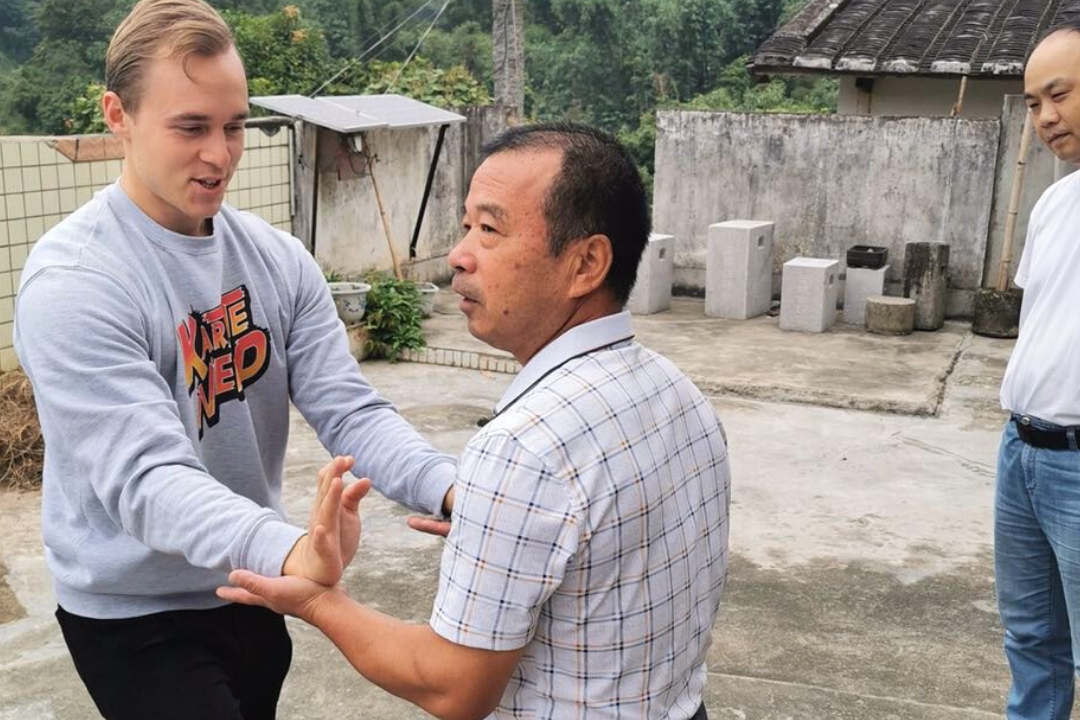

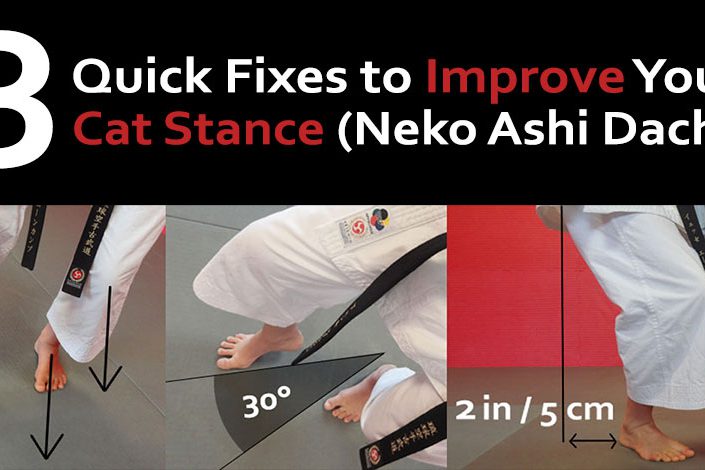
22 Comments